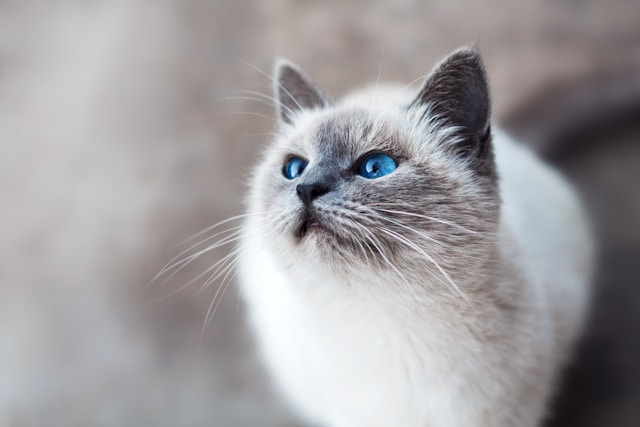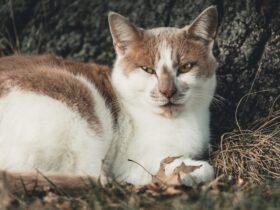The Himalayan cat, often simply known as the “Himalayan,” is a captivating breed renowned for its stunning appearance and charming personality. As a hybrid breed, it combines the gentle nature of the Persian with the striking color points of the Siamese. This article delves into the key characteristics, history, and care requirements of the Himalayan cat to help you understand why this breed is such a beloved companion.
History of the Himalayan Cat
The Himalayan cat’s history is relatively recent compared to other breeds. The breed’s development began in the mid-20th century when breeders aimed to combine the Persian’s luxurious coat with the Siamese’s distinctive color points. This endeavor led to the creation of a breed with a stunning blend of features.
The breed was officially recognized in the 1950s by the Cat Fanciers’ Association (CFA), though it has also been known by various names, including the “Himalayan Persian.” Over the decades, the Himalayan cat has become a popular choice among cat enthusiasts for its beauty and gentle demeanor.
Physical Characteristics
1. Appearance
Himalayans are known for their striking appearance, which combines the best features of their parent breeds. Key physical traits include:
- Body: Himalayans have a compact, stocky build with a round head and a short, thick neck. Their body structure is similar to that of the Persian cat, characterized by a robust, muscular frame.
- Head: They possess a broad, round head with a flat face, often referred to as a “brachycephalic” structure. Their face is typically short and flat, with a pronounced nose break.
- Eyes: One of the breed’s most captivating features is its large, round eyes. The eyes are typically a vivid blue, enhancing the breed’s striking appearance.
- Ears: Himalayans have medium-sized, rounded ears that sit low on their head, blending seamlessly with their facial features.
- Coat: The Himalayan’s long, luxurious coat is one of its defining features. The fur is dense and soft, requiring regular grooming to prevent matting and tangles.
- Color Points: The Himalayan is well-known for its unique color points, which are darker shades on the ears, face, paws, and tail. These points contrast with the lighter body color, which can be white, cream, or blue, among others.
2. Size
Himalayan cats are medium-sized, typically weighing between 7 to 12 pounds. They have a sturdy and muscular build, contributing to their overall presence and elegance.
Personality and Temperament
Himalayan cats are renowned for their calm and gentle demeanor. Here’s what you can expect in terms of their personality:
- Affectionate: Himalayans are known for their loving nature. They enjoy being around their human companions and often seek out attention and affection.
- Quiet: Unlike some other breeds, Himalayans are relatively quiet and reserved. They are not overly vocal and tend to communicate with soft purrs and gentle meows.
- Loyal: They form strong bonds with their owners and prefer to stay close to them. Himalayans may follow their owners around the house and enjoy lounging in their presence.
- Playful: While they are generally calm, Himalayans still enjoy playtime. They are active and curious, often engaging in gentle play with toys and interactive activities.
- Independent: Although affectionate, Himalayans are also quite independent. They are content to entertain themselves when their owners are busy but will happily seek attention when they desire it.
Care and Maintenance
Caring for a Himalayan cat involves several key aspects to ensure their well-being and happiness:
1. Grooming
The Himalayan’s long coat requires regular grooming to keep it in top condition. Here’s what you need to know:
- Brushing: Daily brushing is recommended to prevent mats and tangles. Use a high-quality cat brush or comb to gently work through the fur.
- Bathing: Himalayans may benefit from occasional baths to keep their coat clean and healthy. Use a cat-specific shampoo and ensure thorough rinsing.
- Eye Care: Due to their flat face, Himalayans may experience tear staining. Regular cleaning with a damp cloth can help keep their eyes clean and free from discharge.
2. Diet and Nutrition
A balanced diet is crucial for maintaining a Himalayan’s health. Opt for high-quality cat food that provides the necessary nutrients for their age and activity level. Monitor their weight to prevent obesity, and provide fresh water at all times.
3. Health Check-ups
Regular veterinary check-ups are essential to monitor your Himalayan’s health. Routine vaccinations, dental care, and flea prevention are important aspects of their overall care. Be attentive to any signs of health issues, such as changes in appetite or behavior.
4. Exercise
While Himalayans are generally calm, they still need regular exercise to stay healthy. Provide toys and playtime to keep them mentally and physically stimulated. Interactive toys and climbing structures can help keep them active and engaged.
Conclusion
The Himalayan cat is a breed that combines elegance with a gentle, affectionate nature. Their stunning appearance, characterized by their luxurious coat and striking color points, makes them a favorite among cat lovers. With proper care, including regular grooming and a balanced diet, Himalayans can thrive and bring joy to their owners for many years.
If you’re considering adding a Himalayan cat to your family, be prepared to provide them with the attention and care they deserve. Their loving and loyal nature will undoubtedly make them a cherished member of your household.











Leave a Reply